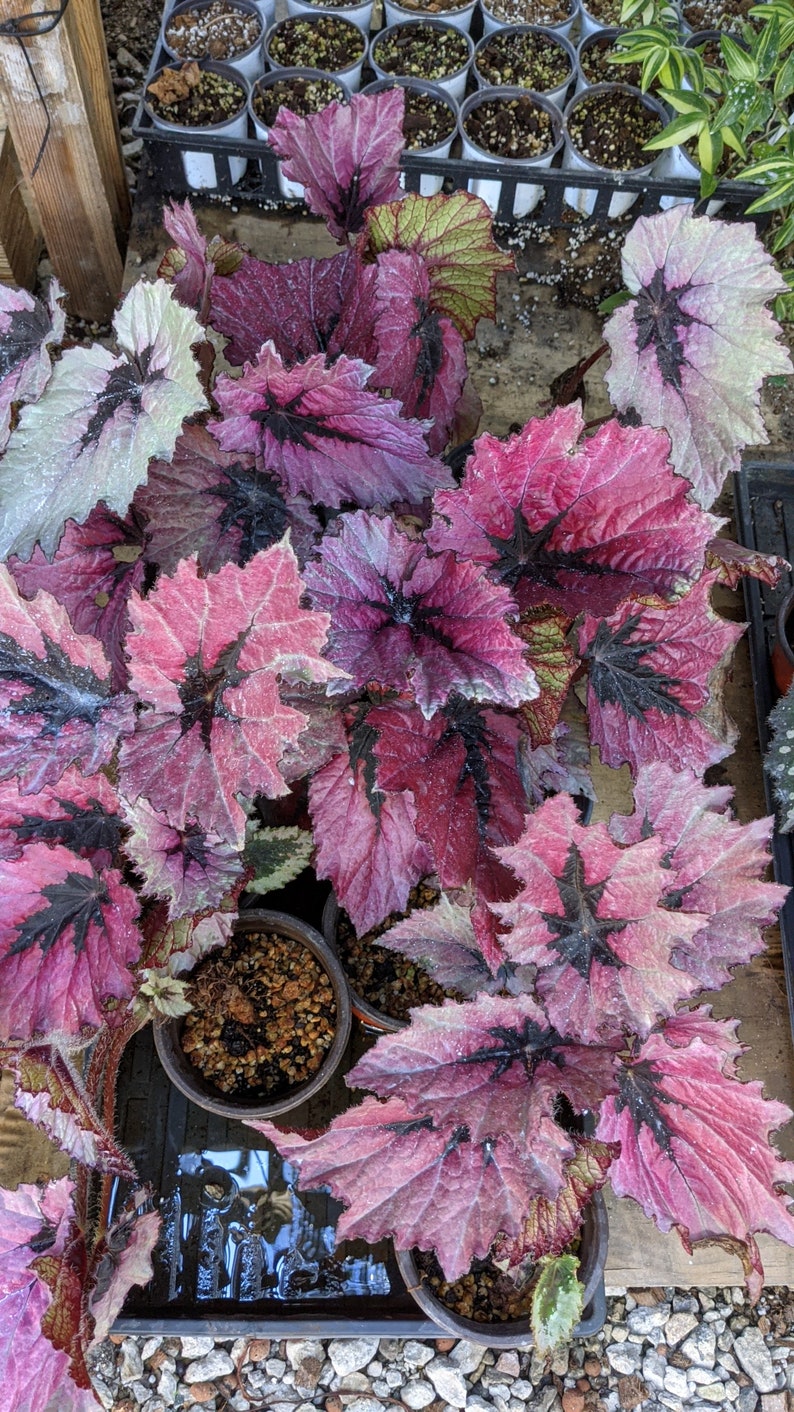Plants with vibrant purple and green colors can add an interesting dynamic to anyone’s garden landscape or interior design.
These plants’ unique color results from an increased presence of anthocyanin concentrations in their foliage. It is for this reason that they get to produce an extensive range of purple and green shades.
We already did the research for you. This article will enumerate 11 popular purple and green colored plants and discuss their upkeep needs as well.
To know more, continue reading.
- Related Article: Lists of Houseplants
1. Oyster Plant (Tradescantia Spathacea)
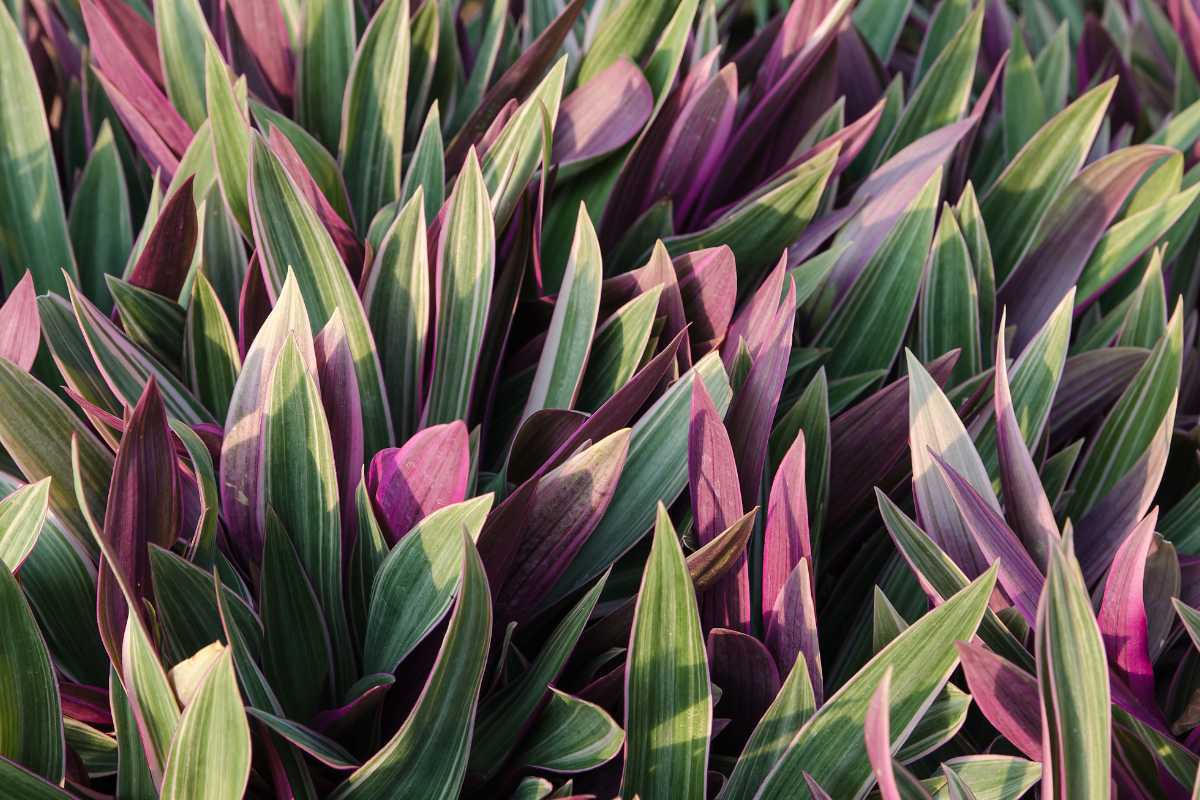
The Oyster plant is a popular feature in homes although this plant can also be grown outdoors provided that it is in a warmer climate.
What makes this plant a hot commodity amongst houseplants, is its long, thick, green leaves that have a purple underbelly. Its spear-shaped leaves make it a great ground cover plant.
The Oyster Plant is sensitive to frost or cooler weather and tends to thrive in warmer and mild climates.
As an indoor plant, it needs plenty of bright indirect sunshine. It can tolerate some direct morning sun but will need to be protected from the harsher afternoon sun.
This purple-leafed plant naturally takes root in the tropics where there are high levels of humidity. It’s also drought resistant and mustn’t be overwatered or else it will succumb to root rot.
2. Persian Shield (Strobilanthes Dyerianus)
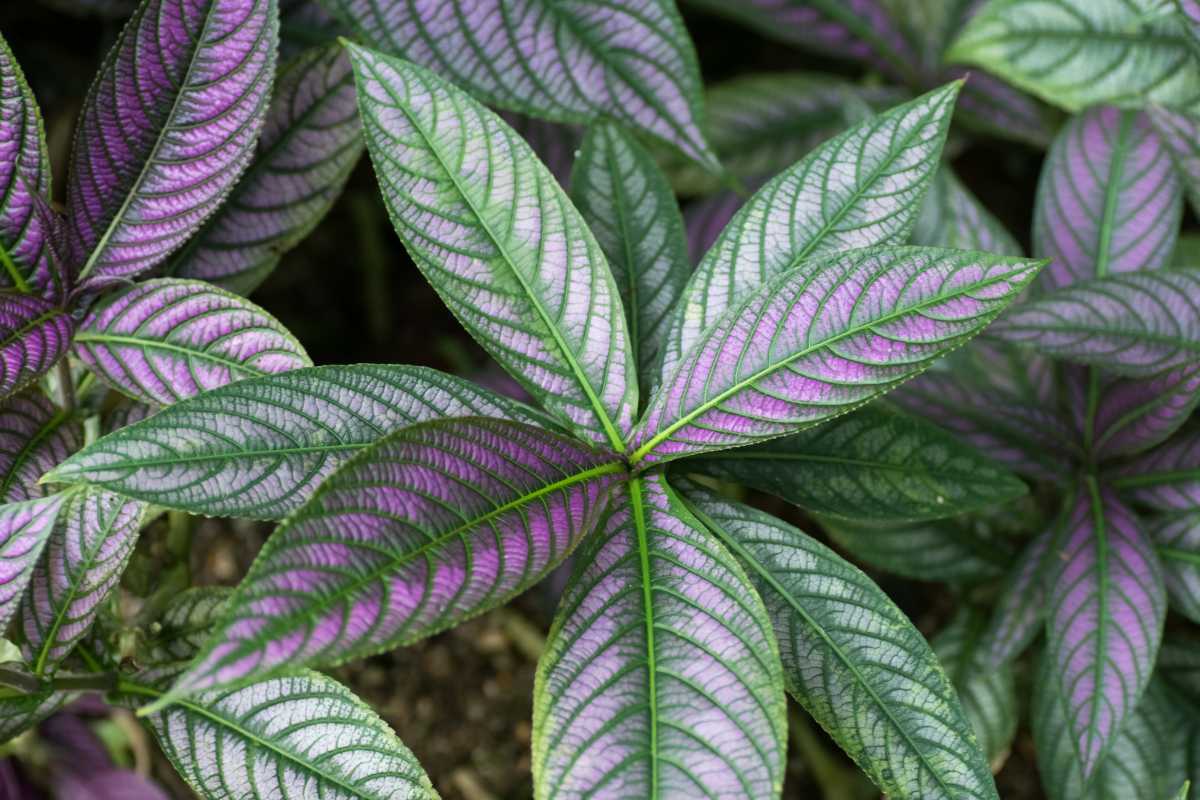
The Persian Shield plant will easily attract a crowd with its shimmering purple, silver, and green veins. This tropical plant is accustomed to growing in humid conditions and is well-suited as a houseplant.
Tropical climates with an abundance of rain, periods of sun, and shade from the afternoon sun are the perfect conditions for the Persian Shield.
This spectacular foliage plant is highly forgiving and can tolerate a full day’s sun along with other outdoor plants in climates that are cooler. However, it may not be able to hold off a full day’s sun in mid-summer where climates are very hot.
If you are planning to keep the Persian Shield inside the house, make sure to rotate its location in areas that receive a good amount of sunlight during the day.
Insufficient lighting will result in the foliage’s color fading.
3. Purple Sage (Salvia)
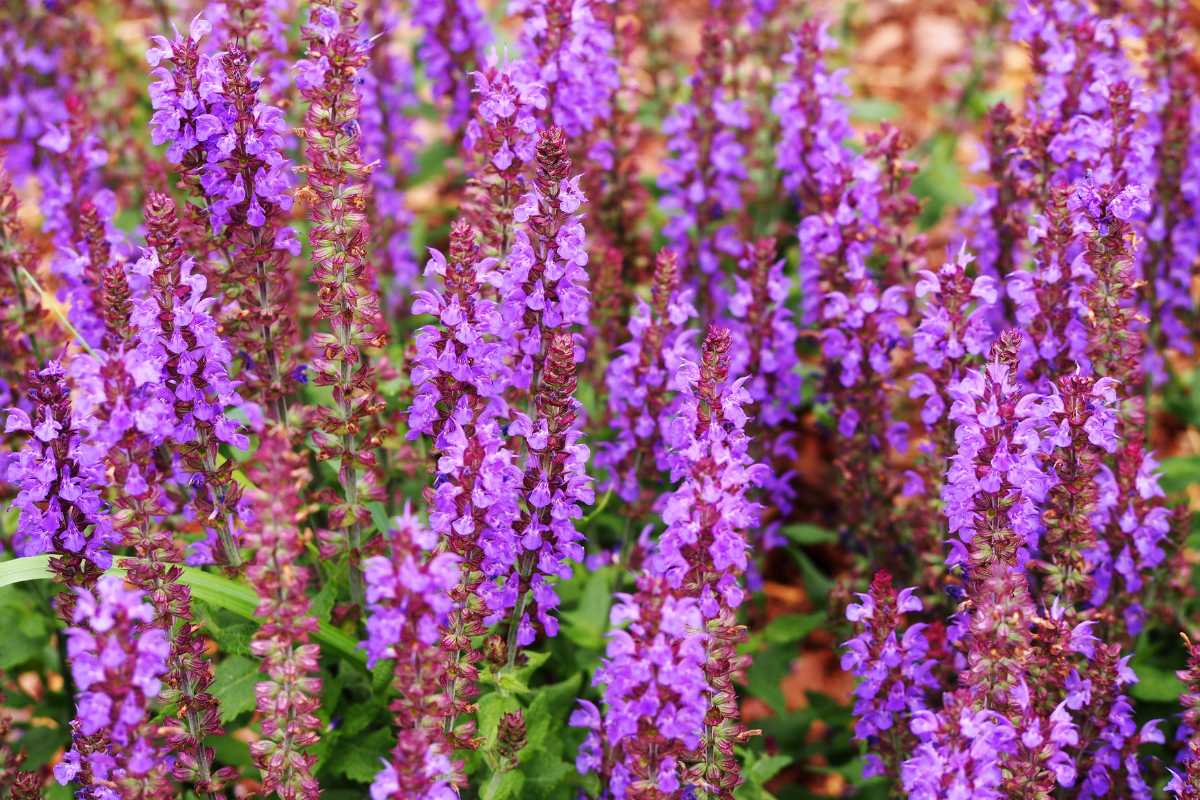
Popular amongst cooks and food lovers, the Purple Sage plant offers a strong flavor just as its aroma can fill any garden. This perennial plant has grayish-purple and green leaves with woody stems.
As a garden plant, Purple Sage thrives through the spring-to-fall period and becomes dormant throughout the wet winters. They prefer to be grown in well-drained soil and full sunlight.
This plant is resilient to drought and naturally occurs in arid areas. This makes it a fantastic plant to grow in areas that are experiencing water restrictions.
4. Rex Begonia (Begonia Rex)
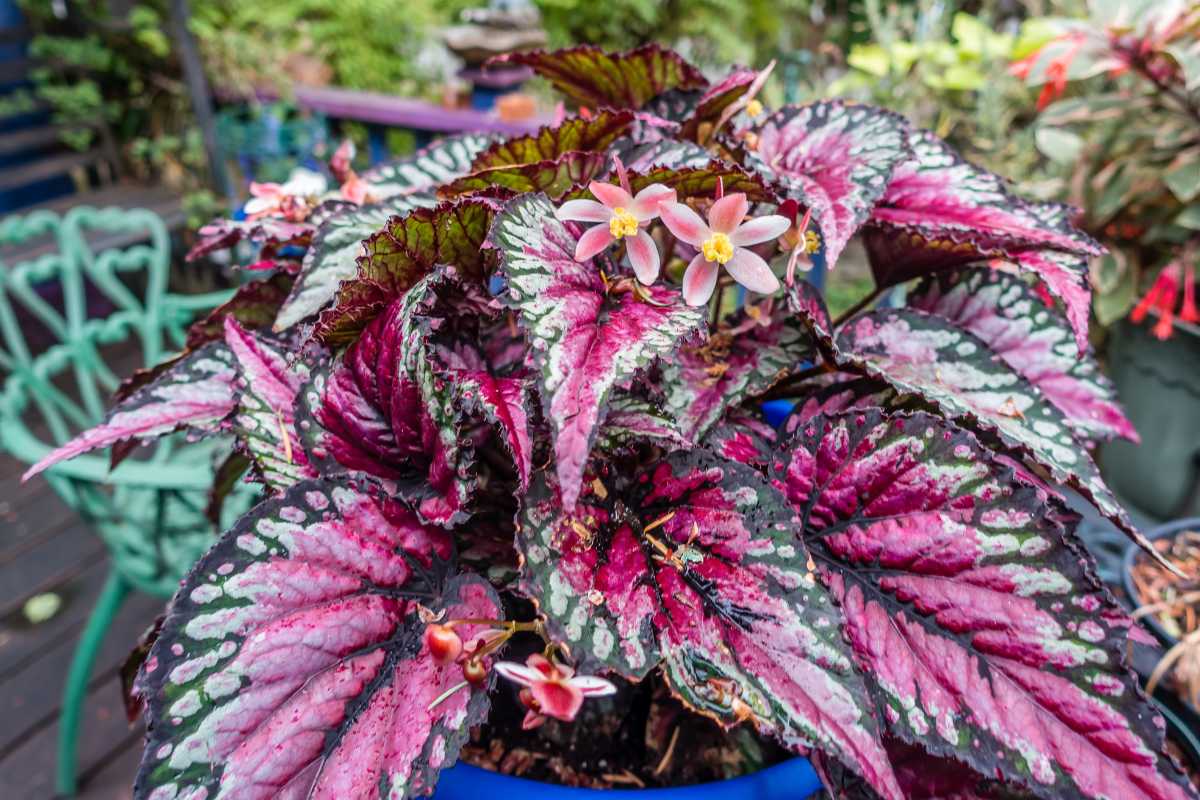
The Rex Begonia is usually used as a bedding plant for landscapes. The tropical regions of Arunachal Pradesh and Southeast China are the natural habitats of this plant.
Known for its colorful foliage, this plant offers a lot of color and shape varieties. Its color usually ranges from green, burgundy, and shades of purple.
These purple indoor plants are sought after for their unique textures of foliage. They are not difficult to care for and make great household plants. They grow exceptionally well in indirect sunlight.
They are susceptible to frost, however, so it’s best to keep these plants from being exposed to cool weather. Tropical plants are acclimatized to growing in humid conditions so make sure that your soil moisture is on point.
5. Ornamental Cabbage Plant (Brassica Oleracea)
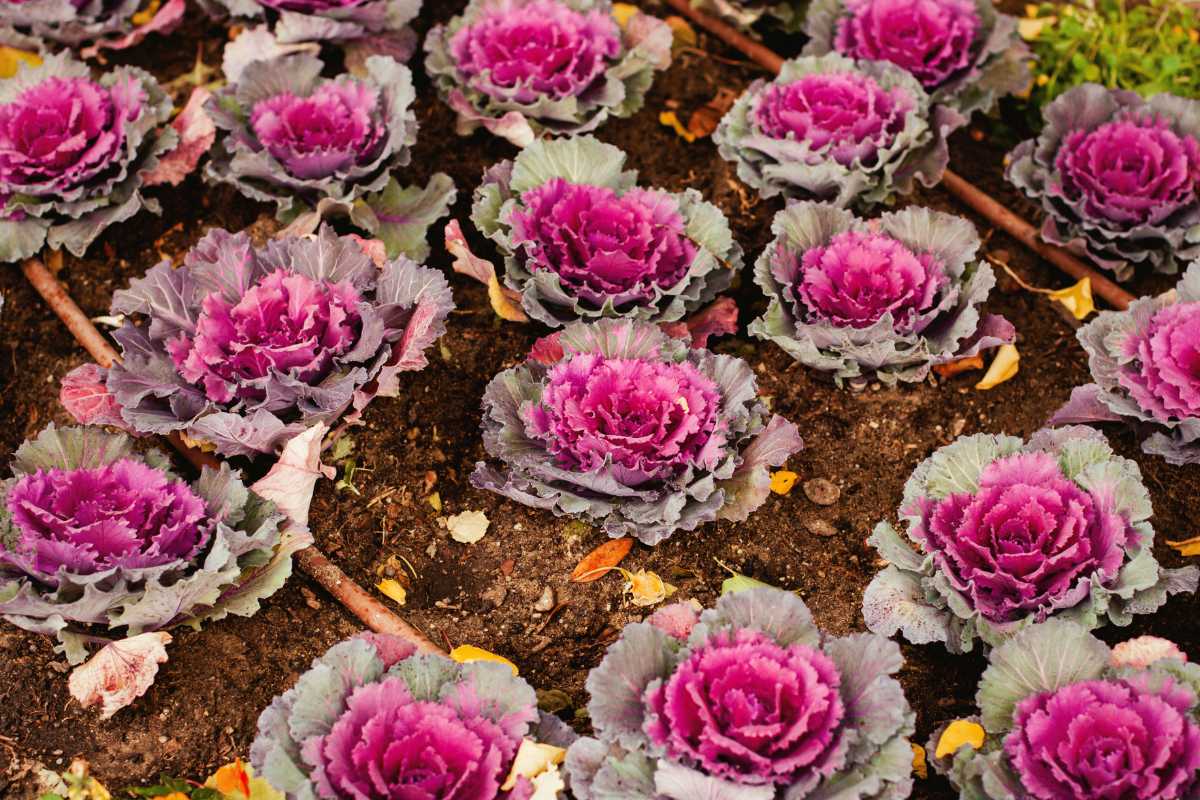
Ornamental Cabbage is commonly referred to as Flowering Cabbage and is a great accent or border plant. It has an outer layer of thick frilly green leaves with a purple leafy rosette in the center that stands out amongst its green foliage.
These are annual plants and grow in the fall to the late winter period as they don’t mind the cooler weather.
When most plants are dormant and trying to survive colder seasons, the Ornamental Cabbage will bring some vibrant colors into your garden.
We advise that you perform a soil test before watering the ornamental cabbage as these plants thrive in well-drained soil.
6. Coleus Versa Watermelon (Solenostemon Scutellarioides)
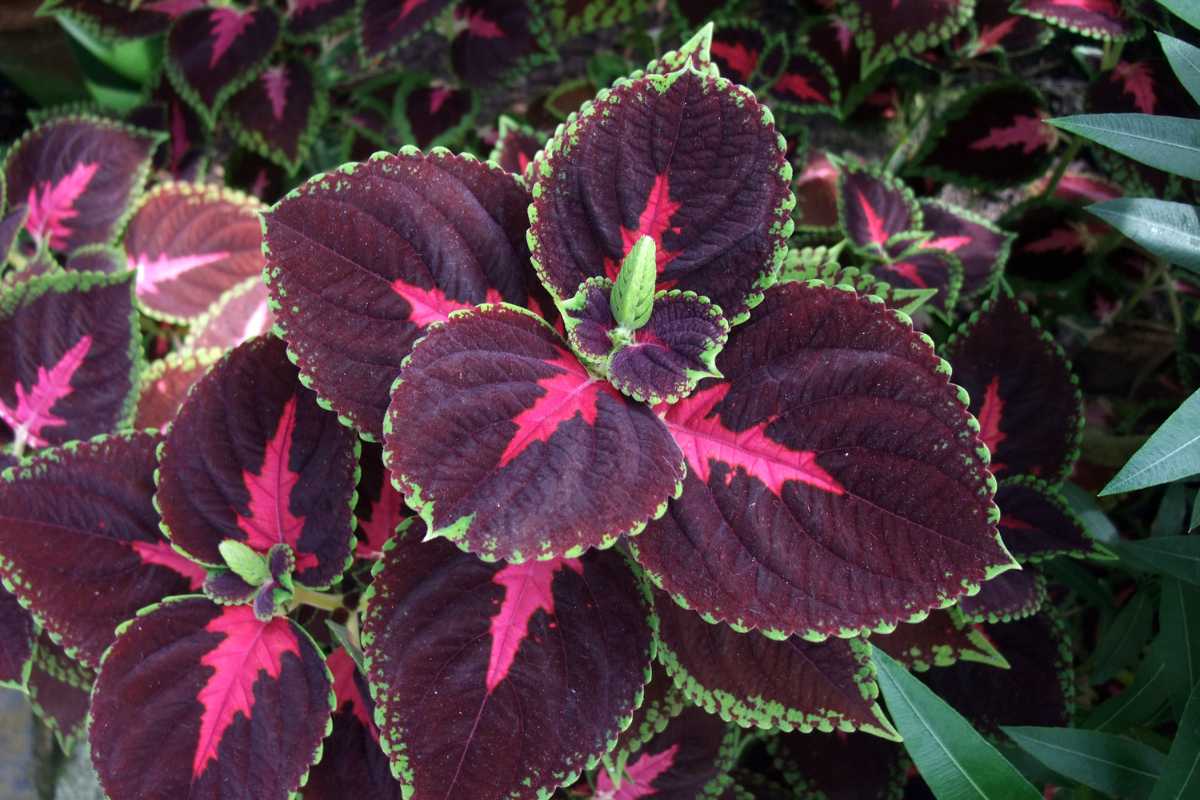
Coleus is a perennial plant and is a popular houseplant. It would be common to see these planted in pots or hanging in baskets.
Its eye-catching colors of purple and green will brighten up any interior decoration as well. Aside from that, these attractive plants are favorites among many because they are very easy to grow.
A bright interior with plenty of bright light will do just fine for this plant. The Coleus can handle periods of exposure to morning sun but will need to be provided with afternoon shade if grown outdoors.
7. Purple Velvet Plant (Gynura Aurantiaca)
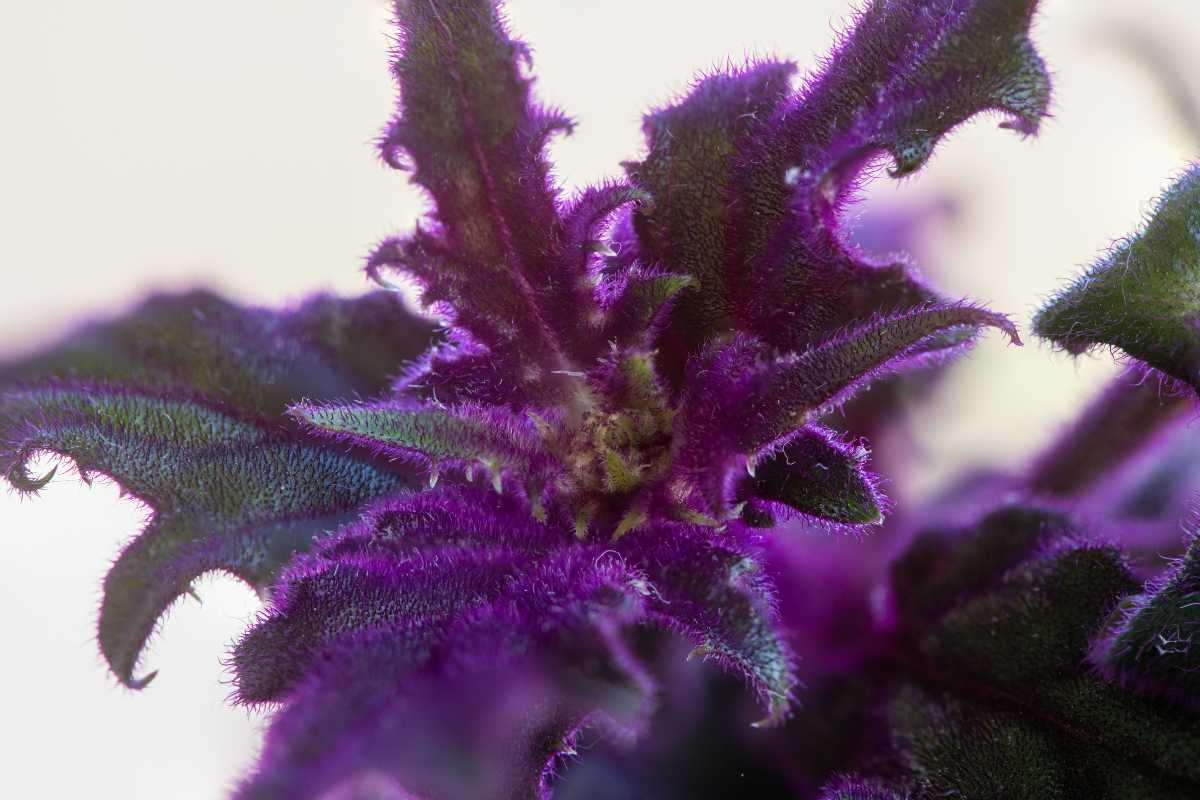
The Purple Velvet Plant, also known as the Purple Passion Plant, has thick, velvety, green leaves with royal purple-colored hairs on its foliage.
When the plant is younger, the deep shade of purple color is more intense. Mature plants have more separated hairs and their purple tones are not as vibrant.
The purple velvet plant can grow tiny orange flowers that contrast beautifully against its dark hues. Its cascading tendencies make it an ideal plant for a hanging feature as well.
When the Purple Velvet plant is grown in bright, indirect light, its colors are intensified. So if you want to maintain its vibrant appearance, make sure that it has access to light.
Avoid letting the direct sun reach the leaves of this plant, as they easily become scorched. These plants thrive on moist, well-drained soil and don’t work well with soggy soil.
8. Wandering Jew (Tradescantia Zebrina Formerly Zebrina Pendula)
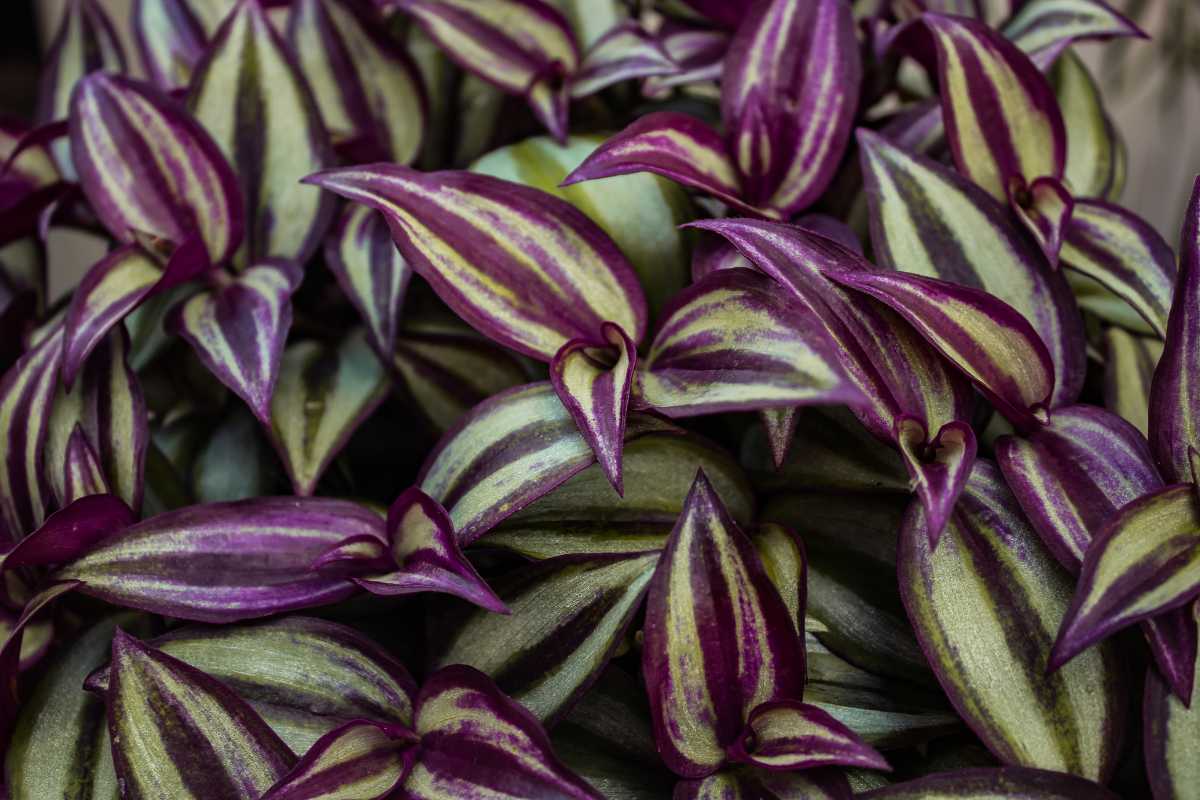
The Wandering Jew plant or otherwise known as the silver inch plant, zebra plant, and inch plant, gets its name from its creeping abilities.
This beautiful plant provides ground cover for your garden and can be used as an indoor hanging feature just like the purple velvet plant.
The Wandering Jew plant is native to Mexico and is known for its purple and silvery, green-striped foliage.
It’s a fast-growing plant that thrives in areas with light shade as it particularly enjoys growing indoors with bright, ambient light.
Remember to not overwater the entire plant and give it room to completely dry out. Soil with great drainage is essential to keep it healthy. You may however spray the topsoil during late summer to help it retain moisture.
9. Prayer Plant (Maranta Leuconeura)

The Prayer Plant is native to South America. It gets its peculiar name from its leaves that lie flat during the daytime and fold together at night, mimicking praying hands. This tropical houseplant is distinguishable by its velvety leaves.
The leaves of the Prayer Plant are green with purple veins that run across its foliage.
It’s a slower-growing plant that can reach up to 1 foot in height so it is easy to maintain and you won’t have to trim it that often.
The Prayer Plant can tolerate morning sunshine but prefers to grow in shaded locations with plenty of ambient light. This plant will happily thrive in moist soil that has good drainage.
10. Purple Waffle Plant (Hemigraphis Alternata)
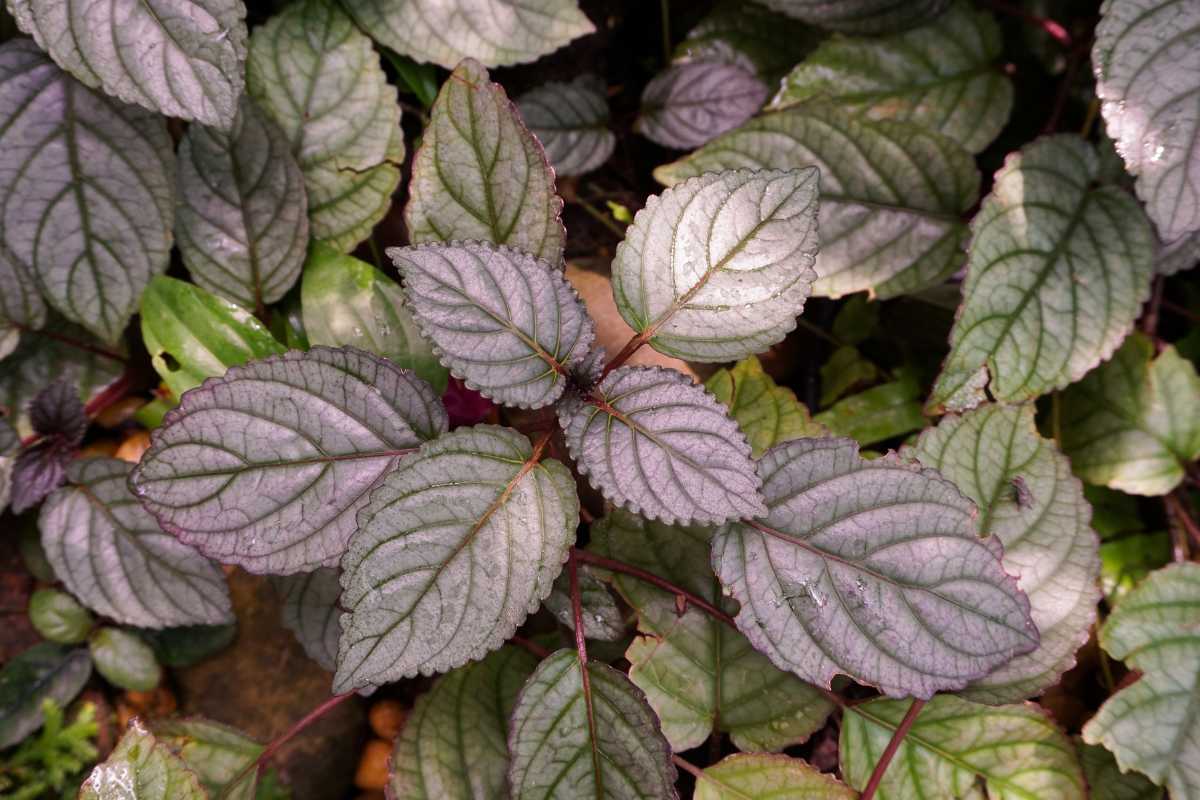
The Waffle Plant also referred to as the Red Ivy is a perennial plant known for its oval, green leaves that have a deep purple bottom.
This plant is a preferred houseplant because of its air-purifying abilities.
If you don’t like the upkeep that comes with indoor plants, this plant is perfect for you because it barely needs any maintenance. Its slow growth rate makes it easy to care for and there’s rarely any pruning needed.
The Purple Waffle plant is a tropical plant, and that means two things: it grows in warm temperatures and loves to be watered.
Tropical plants are accustomed to growing under the canopies of tree tops and grow best in indirect sunlight. Bright rooms with plenty of indirect sunlight are the secret to this plant’s ability to thrive.
11. Rubber Plant (Ficus Elastica)
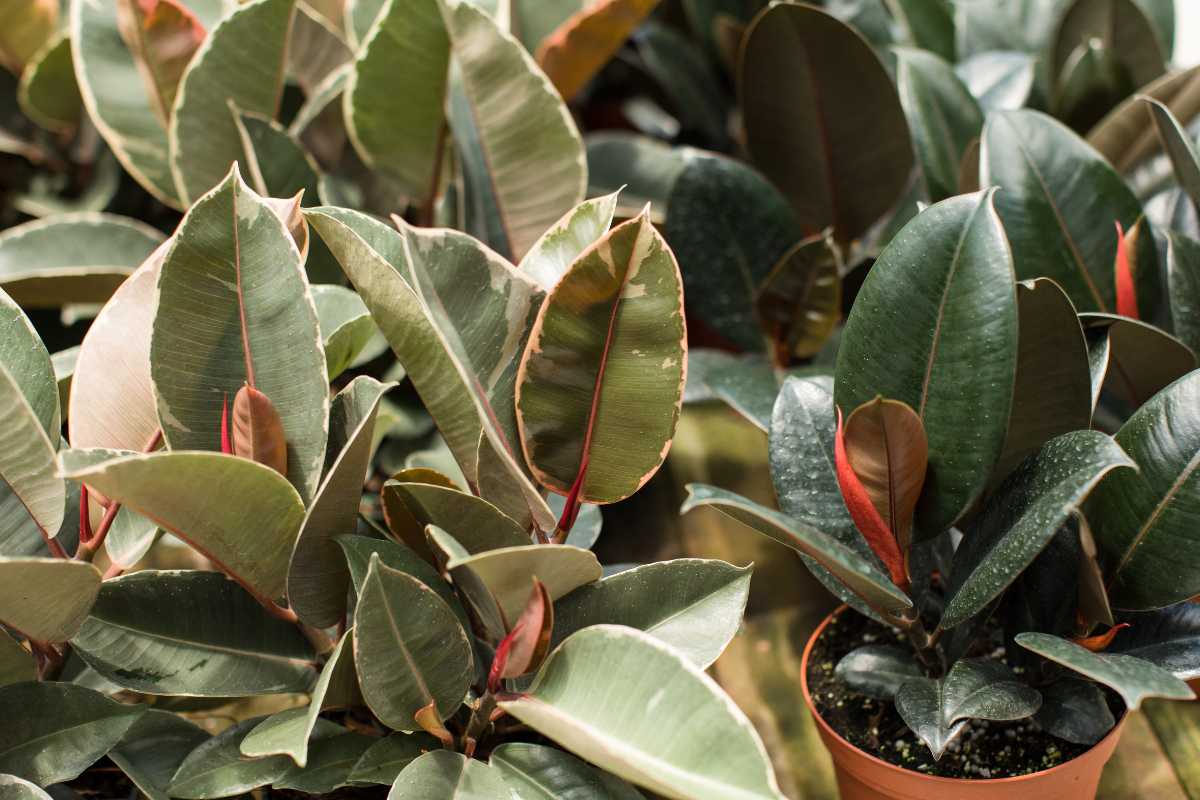
The Rubber Plant has thick green leaves with a pink outlining. As this plant matures, a dark purple color takes over its leaf margins.
This plant loves to soak in indirect sunlight. As long as you provide it with the proper conditions, it can live to grow for up to 30 meters in height.
You will know when this plant is receiving too much regular water as its leaves will shed off to alarm you. When this happens, try to switch up your watering schedule and adjust it accordingly.
Contrary to the Purple Waffle Plant, the Rubber Plant has an extremely fast growth rate and will need the use of fertilizers every once in a while.
Final Thoughts on Plants With Purple and Green Leaves
Plants with purple and green leaves offer something more than purifying the air and providing shelter to small insects and animals.
They are sure to add a dimension to your garden with their vividly colored foliage that comes in a variety of shapes, textures, and sizes. They often attract natural pollinators as well so you are sure to keep your garden bustling with variety in no time.
Plants with purple and green leaves are a great option for beginner gardeners and enthusiasts alike. They can brighten any landscape and add an interesting pop of color. Try planting these beauties now!
To know more about plants, check out these amazing articles:




